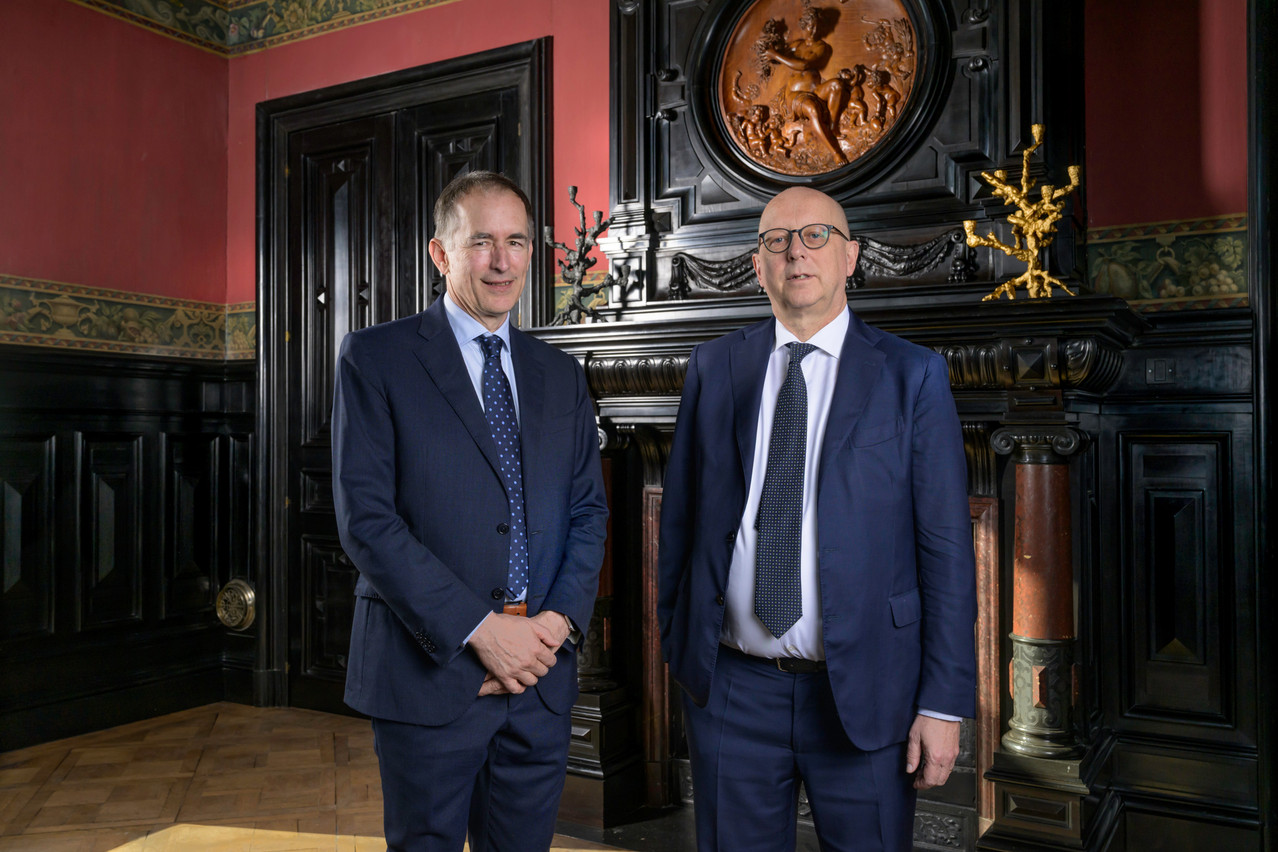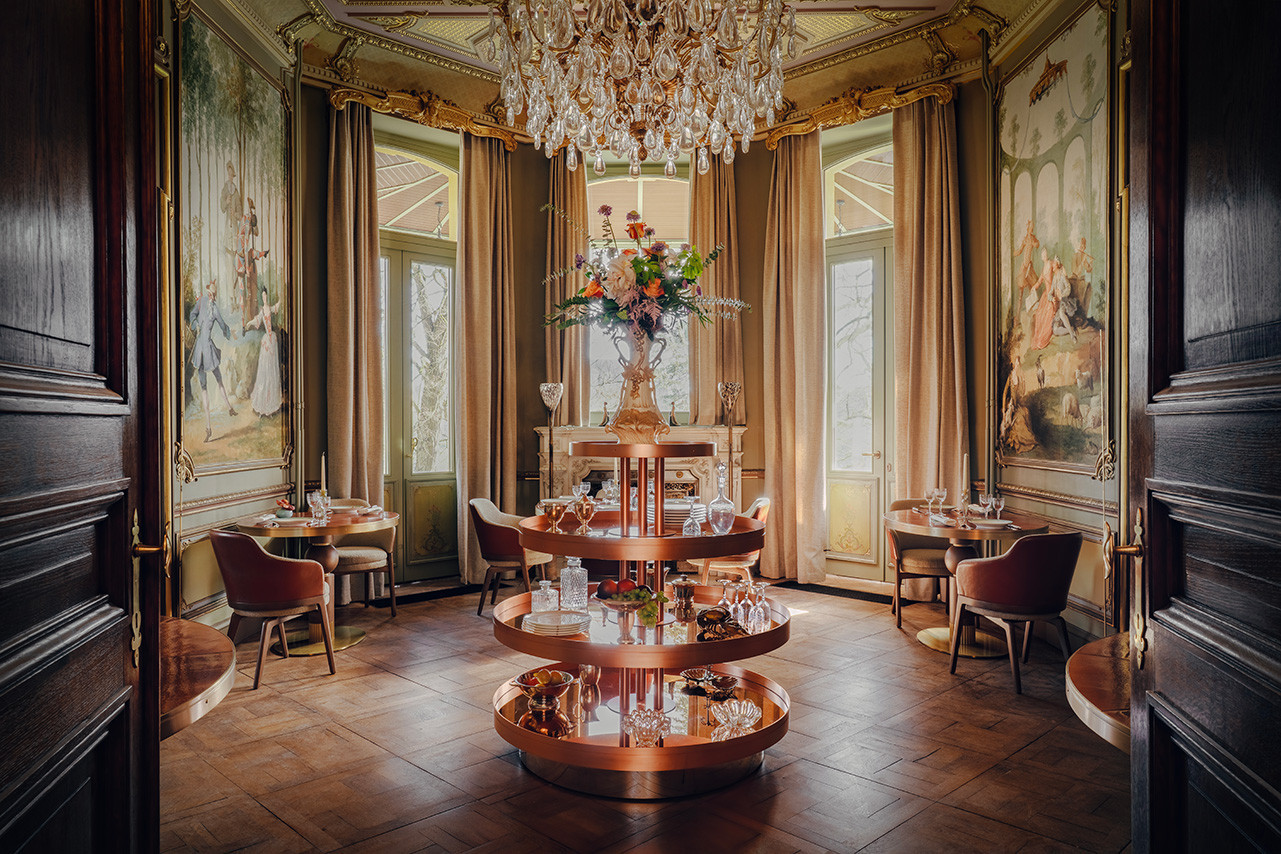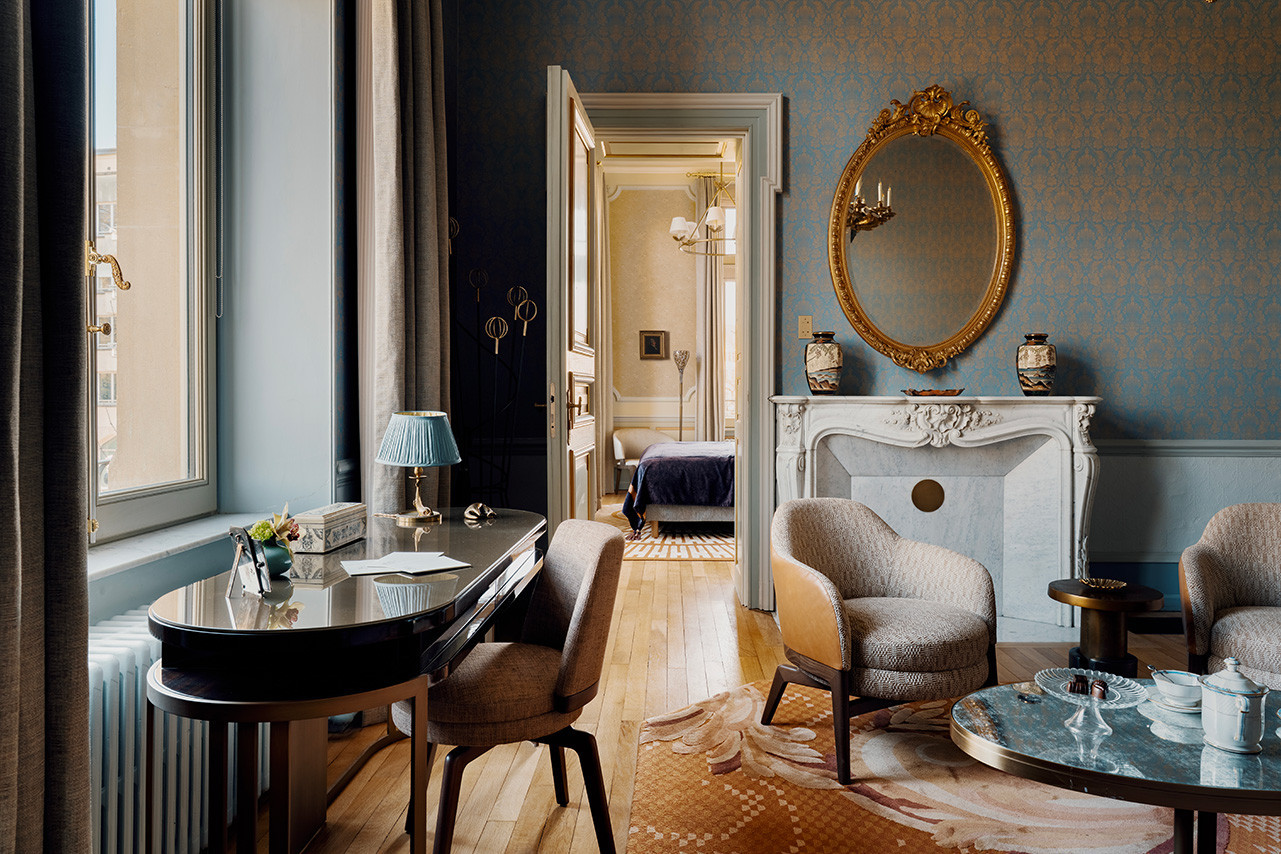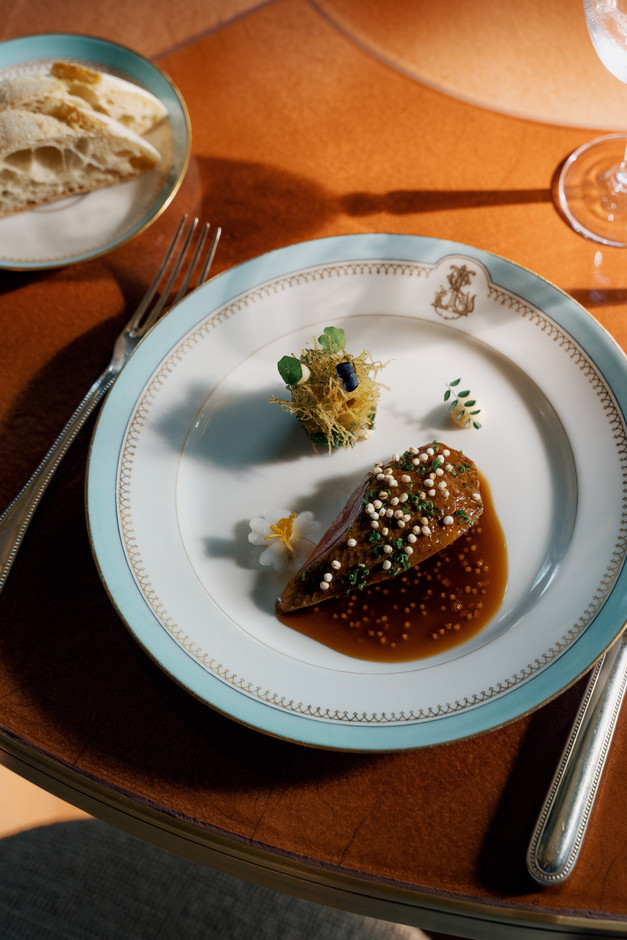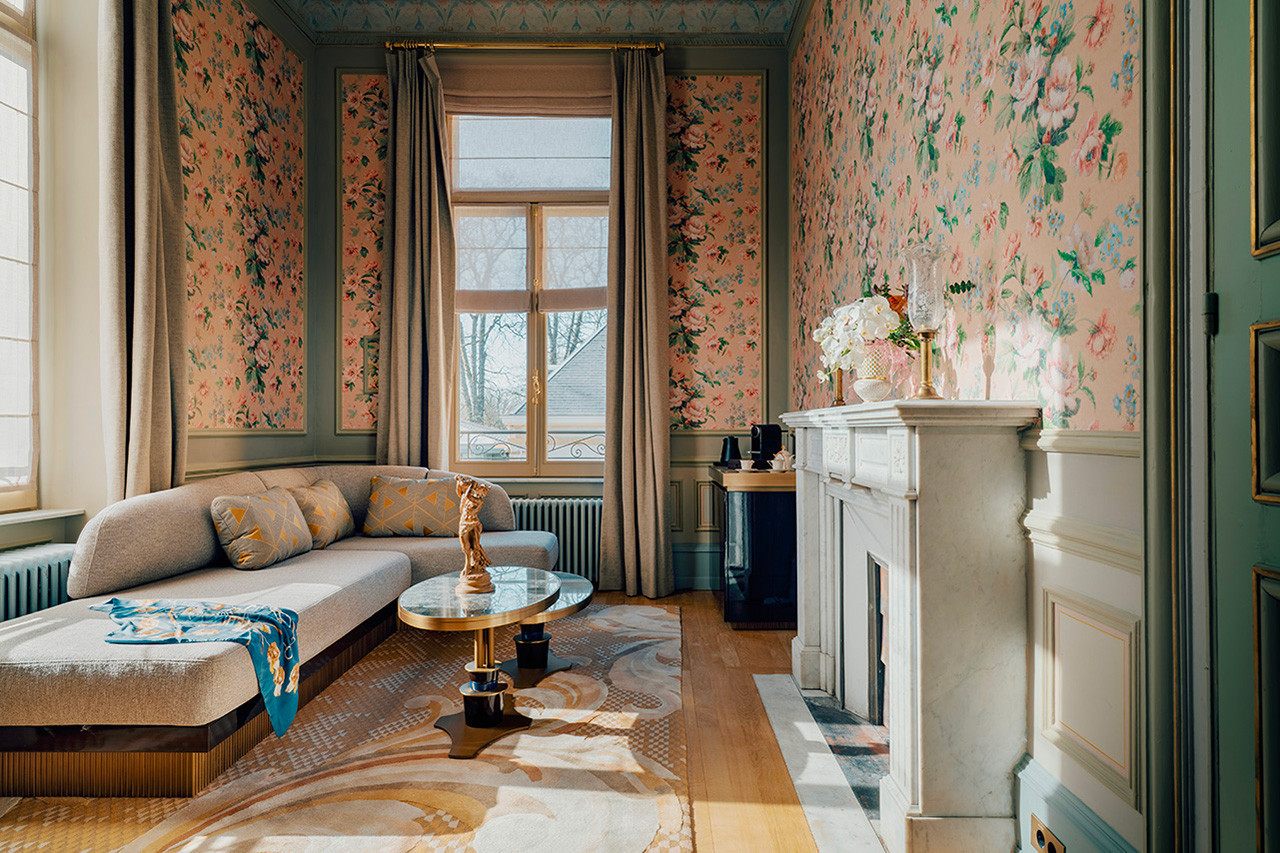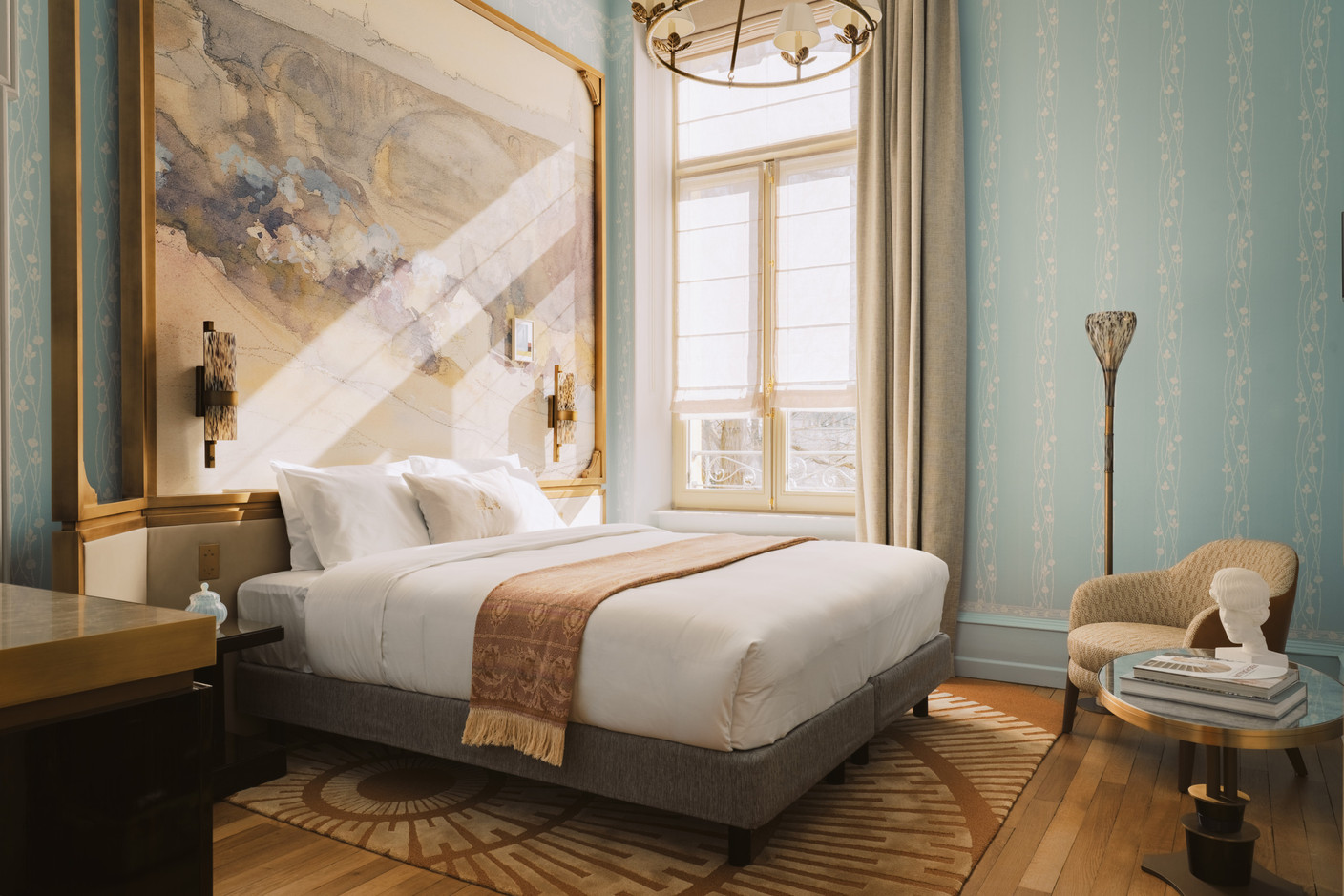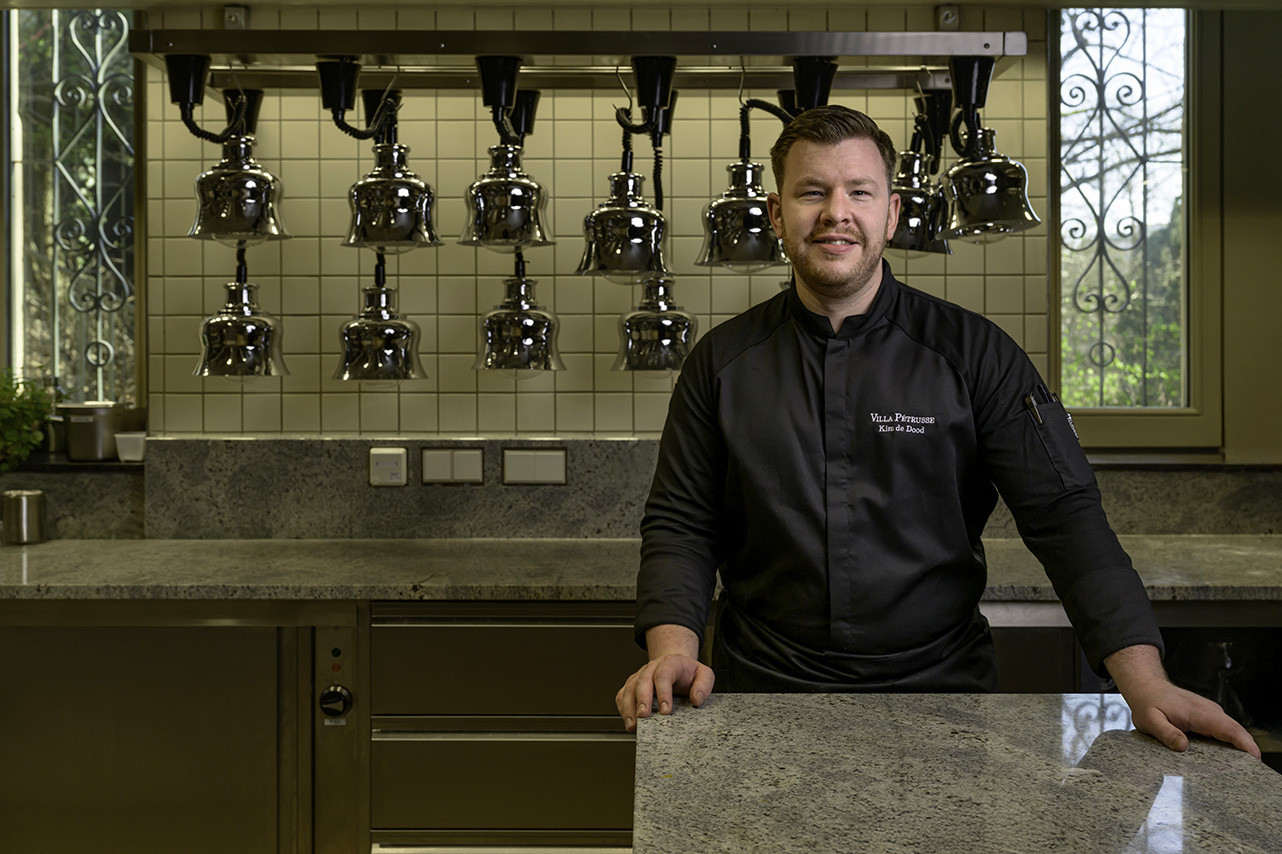Paperjam: How did this property come into your portfolio and why did you decide to take over this exceptional asset?
François Pauly: Just eight years ago, I visited this property that I knew was for sale. It was love at first sight. I showed it to Pit Hentgen, my cousin, and we said to ourselves that this home could mark our return to the city. As you know, we sold our historic headquarters on Boulevard Royal-Coin Grand Rue to the Luxembourg City Council in 2008. But we are still people from the city, Stater as they say in Luxembourgish, and we wanted to acquire an emblematic property for our shareholders. So we thought this villa met a lot of our criteria. That’s why we embarked on this investment.
Did you immediately think about developing a hotel offering there?
Yes, especially as--and this wasn’t widely known at the time--we already had a hotel business in the town with the Place d’Armes hotel. We thought that this villa could be a complementary address to that hotel. That’s also why we immediately opted for the name Villa Pétrusse, to give this place a new identity and move the project forward.
And so it was that Compagnie Financière La Luxembourgeoise became the owner of this historic villa?
Yes. More precisely, both the Place d’Armes hotel and Villa Pétrusse belong to Compagnie Foncière La Luxembourgeoise, which is owned by Compagnie Financière La Luxembourgeoise. Compagnie Financière La Luxembourgeoise is in fact structured around three divisions: the insurance division, which is the best known, with LaLux; a second division for long-term investments with other families, especially outside Luxembourg; and a third division, real estate, through Compagnie Foncière La Luxembourgeoise. This real estate company owns a number of buildings, mainly in Luxembourg, but also development land in Luxembourg and a tiny bit abroad.
What type of property does the real estate company own?
In fact, the Compagnie Foncière makes investments that our shareholders cannot make privately, given the complexity and size of the projects or the expertise required to acquire and develop these properties. That’s why this property company includes this hotel business, but also development sites or sites where there are already projects on them, but which need to be restructured and which require financial resources that go beyond what an individual shareholder with us can achieve.
Are these more mixed-use sites, residential or industrial?
There’s quite a mix. So it could be industrial, residential or mixed-use. As far as our insurance business is concerned, that’s more yield property, because we have to make sure that the commitments made at insurance level correspond to long-term commitments.
Owning these hotels is a rather unusual choice. Why did you do it?
It’s more complex than that. When we bought the Place d’Armes hotel, we were not the operator in terms of risk. We only owned the premises. But at a certain point, the manager wanted us to take over the risk as well. Which we did, by taking over the teams. So today, the staff at both hotels are employees of our group. Nevertheless, we benefit from a very strong brand, Relais & Châteaux, which helps us with bookings and marketing positioning. And we also have the help of Aina Hospitality consultants.
Was this development of hospitality a deliberate choice to diversify or an opportunity?
Historically, our group was heavily involved in the brewing sector, which in turn was linked to the restaurant business. For example, we were involved in the Pôle Nord [brasserie and nightclub], where all of Luxembourg went between the 1950s and 1970s--it was run by a brewery in which we were the main shareholder. But we sold that business in 1999.
However, when we bought the Place d’Armes hotel in 2015, we said to ourselves that there was a need in Luxembourg for a hotel business that positioned itself in a segment other than those occupied by the major hotel groups, to return to a more classic hotel business, very customer-oriented, in exceptional locations. Before becoming a hotel, Le Place d’Armes was a former printing works. Today, everyone thinks the hotel has always been there. We were able to breathe new life into these buildings. It was more or less the same desire we had for the Villa Pétrusse. And, objectively speaking, there weren’t 36 solutions for giving it a new lease of life and also offer access to this historic heritage to people in the town and those who come from further afield.
Has this project been well received by the members of the company’s board?
When we presented this project to the board, it was in 2017 and, as explained, we were thinking symbolically of our return to the city for our 100th anniversary. The proposal was well received, and although this project was of course discussed by our members, like all our investment projects, the decision was unanimous.
What was the big challenge in building this hotel?
This isn’t a classic hotel or an establishment where you try to optimise every square centimetre. It’s more like a residence, a villa that reflects a very important history while taking a step towards modernity. As with any renovation, there were challenges associated with the worksite. One of our major challenges was to be able to integrate modern technology into this historic house. This was possible thanks to the work of architects Jim Clemes Associates, with engineers from auCARRE and Jean Schmit Engineering.
Within your portfolio, is Villa Pétrusse a risky product?
There was a significant operational risk, that’s for sure, because any renovation and conversion of a historic building involves risks. In terms of financial risk, we took a different approach to profitability. Here, the profitability will benefit not our children, but our grandchildren. So it’s a change from conventional property investments.
Can you give us an idea of the investment you’ve dedicated to this project?
We’re approaching two million per room. These are very significant investments. In fact, Villa Pétrusse is an investment close to the investment prices of a Parisian palace.
Do you see the work you have done almost as an act of patronage?
Patronage means entrusting the project to someone else and having no view on the return on investment. That’s not the case here. It’s more an act of citizenship, because this building, which is highly visible and emblematic, was empty for nearly 30 years. We don’t usually talk about our investments, but for this project we wanted to say that we had made this effort, that we had “treated” ourselves to our centenary, that we had recreated an address in the city centre. We also hope to attract people who will discover Luxembourg in a different way. And, in time, there may be a capital gain on this investment. But this is historic restoration, so there are other criteria. When you realise that the external stones have been removed, cleaned, restored, re-installed, with the cost of labour in Luxembourg, you can easily imagine that this is not a small investment.
What is your view of the luxury hotel market in Luxembourg, which will soon have two new high-end hotels with the opening of the Hôtel des Postes and the Marriott Hotel Alfa?
If I look at the number of rooms we have in the Villa Pétrusse, I don’t think we’ll have many problems with room occupancy. The establishment will be unique in that it will combine a different kind of hotel--the site is surrounded by greenery--with very high quality gastronomy. I don’t think we’re quite in the same market niches.
What interaction will there be between Villa Pétrusse and the Place d’Armes hotel?
These are two hotels run with different operational management. The Villa Pétrusse will be managed by Stéphanie Raimbault. There will of course be administrative synergies, for accounting, technical and IT maintenance, etc. But for the customer, there will be two different experiences, including in terms of gastronomy. Both houses have a broad enough positioning to have several players.
Stéphanie Raimbault

Says Stéphanie Raimbault: “Opening an establishment is every hotelier’s dream.” Photo: Nader Ghamavi
Born into a family of restaurateurs running a two-star Relais & Châteaux, the general manager developed her passion for hospitality at an early age. After studying at the Ecole hôtelière de Lausanne, she gained experience in prestigious establishments, international palaces and Relais & Châteaux. Over the last 12 years, she has held various positions at Four Seasons in Geneva, London and Los Angeles. She also has experience in haute gastronomy (La Dame de Pic London). “Opening an establishment is every hotelier’s dream,” she says. “To be able to do it in a hotel on a human scale is a great opportunity, all the more so in a villa like this, so full of history.” She manages a team of 40 people.
A house full of history

Historian Robert Philippart between Pit Hentgen and François Pauly. Photo: Nader Ghavami
Historian Robert Philippart looks back at the history of the villa: “Villa Pétrusse is located on the former territory of the military estates. After the dismantling of the fortress (1867), and as Luxembourg became a new capital, Henri-Eugène de Kerckhoff, a cloth merchant who had made his fortune, bought the land in 1880 and commissioned Pierre Kemp (who also designed the Casino Bourgeois and the Fondation Pescatore, among others) to build his villa along the new park designed by Édouard André. The architect conceived the house as a miniature château, reflecting the expectations of the educated, well-travelled bourgeoisie of the late 19th century. That’s why there’s a mix of styles in the house, with salons whose references range from Antiquity to the Henri VII style.”
“Hygiene was also a new concern,” he continues, “hence the large vertical windows, the installation of the kitchen in the cellar and the establishment of the stables outside. The house was then taken over by the son Albert, who died young and whose widow remarried Dr François Baldauff (hence the name Villa Baldauff for a time). It was bought by Compagnie foncière La Luxembourgeoise in 2017."
Historical and contemporary
This article, , was written for the May 2025 , published on 24 April. The magazine's content is produced exclusively for the magazine. It is published on the site to contribute to the full Paperjam archive.
Is your company a member of Paperjam Club? You can request a subscription in your name. Let us know via .
